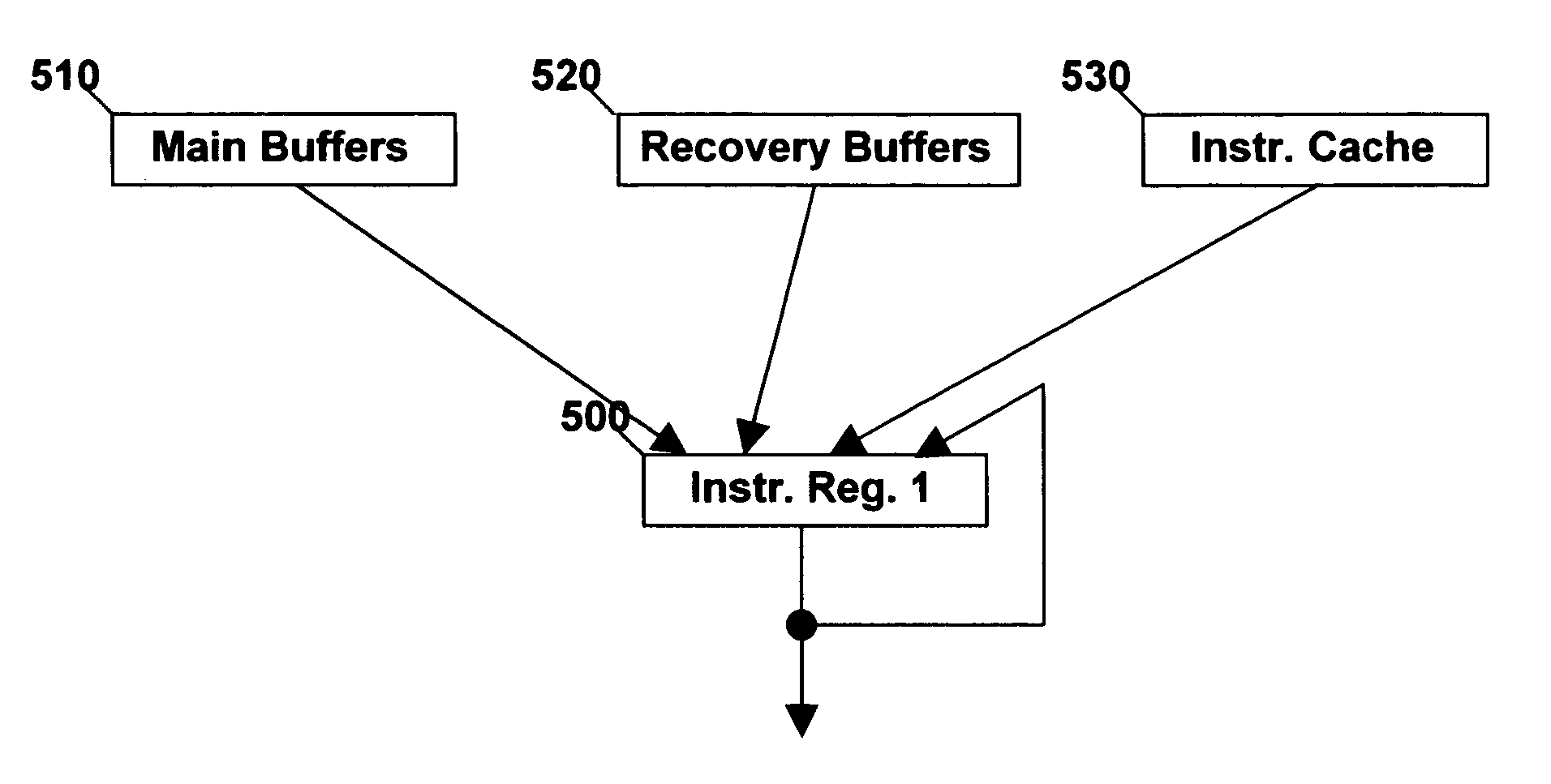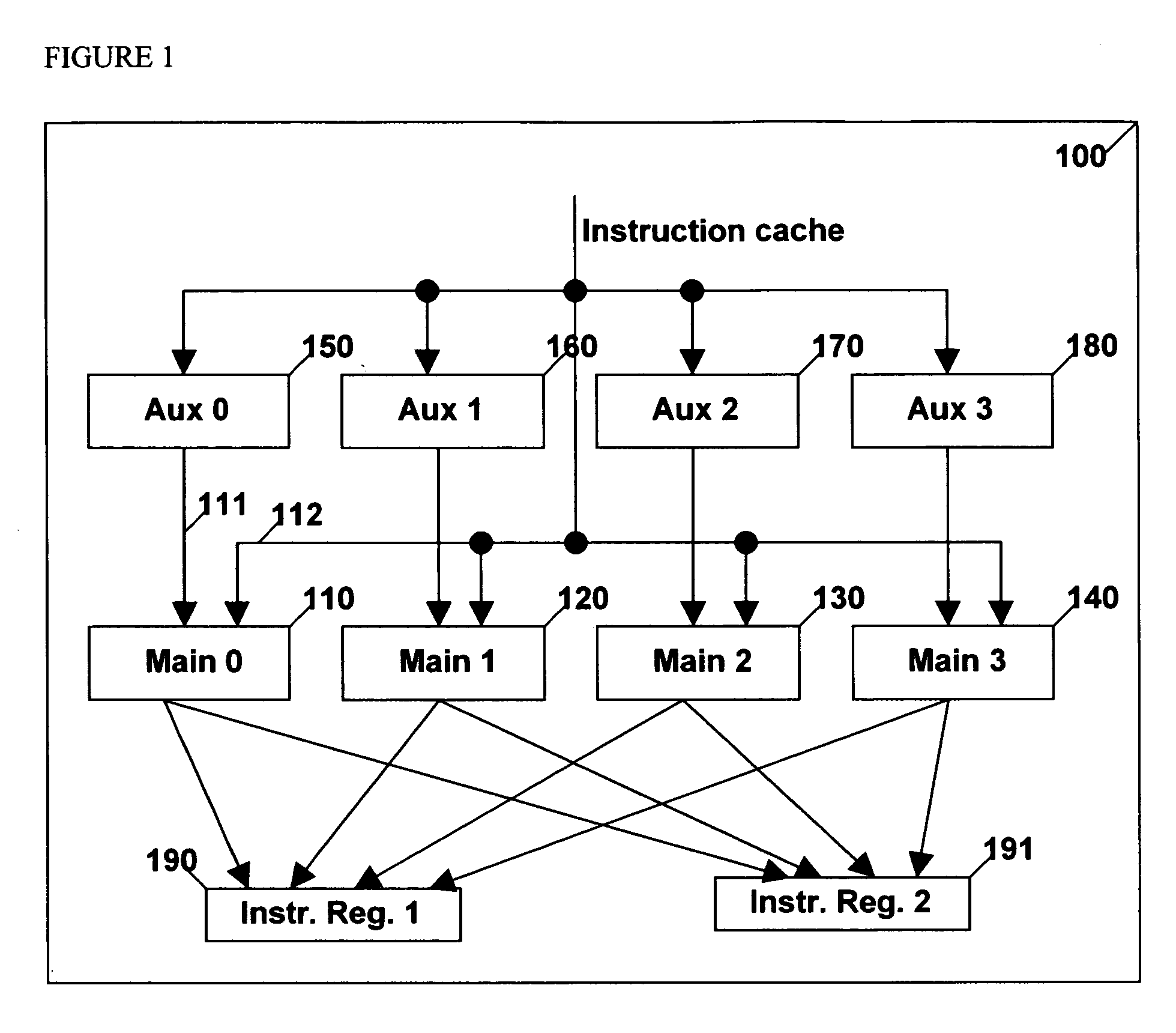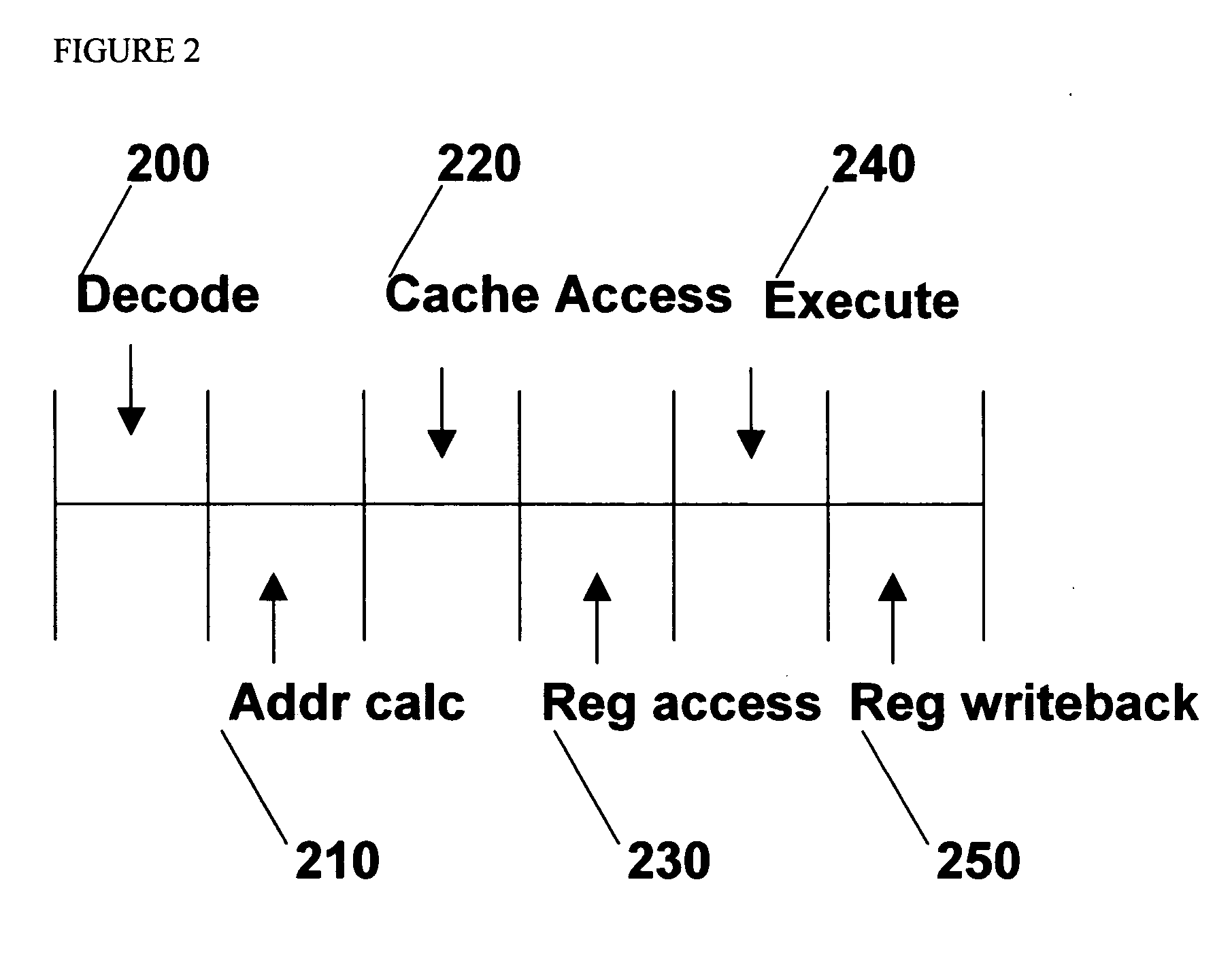Linked instruction buffering of basic blocks for asynchronous predicted taken branches
a basic block and asynchronous prediction technology, applied in the field of computer systems, can solve the problems of incomplete optimization of past solutions for space, utilization rate and performance, penalty associated with improper, latency added, etc., and achieve the effect of preventing unnecessary fetching and high-efficiency fetching algorithm
- Summary
- Abstract
- Description
- Claims
- Application Information
AI Technical Summary
Benefits of technology
Problems solved by technology
Method used
Image
Examples
Embodiment Construction
[0029] The present invention is directed to a method and apparatus in regard to the organizational and behavior of instruction fetching related to the return of the organization of data being placed into buffering situated between the cache and the instructions registers of a microprocessor pipeline given the interaction of an asynchronous branch target buffer and branch history table.
[0030] A basic pipeline can be described in 6 stages with the addition of instruction fetching in the front end. The first stage involves decoding 200 an instruction. During the decode time frame 200, the instruction is interpreted and the pipeline is prepared such that the operation of the given instruction can be carried out in future cycles. The second stage of the pipeline is calculating the address 210 for any decoded 200 instruction which needs to access the data or instruction cache. Upon calculating 210 any address required to access the cache, the cache is accessed 220 in the third cycle. Dur...
PUM
 Login to View More
Login to View More Abstract
Description
Claims
Application Information
 Login to View More
Login to View More - R&D
- Intellectual Property
- Life Sciences
- Materials
- Tech Scout
- Unparalleled Data Quality
- Higher Quality Content
- 60% Fewer Hallucinations
Browse by: Latest US Patents, China's latest patents, Technical Efficacy Thesaurus, Application Domain, Technology Topic, Popular Technical Reports.
© 2025 PatSnap. All rights reserved.Legal|Privacy policy|Modern Slavery Act Transparency Statement|Sitemap|About US| Contact US: help@patsnap.com



